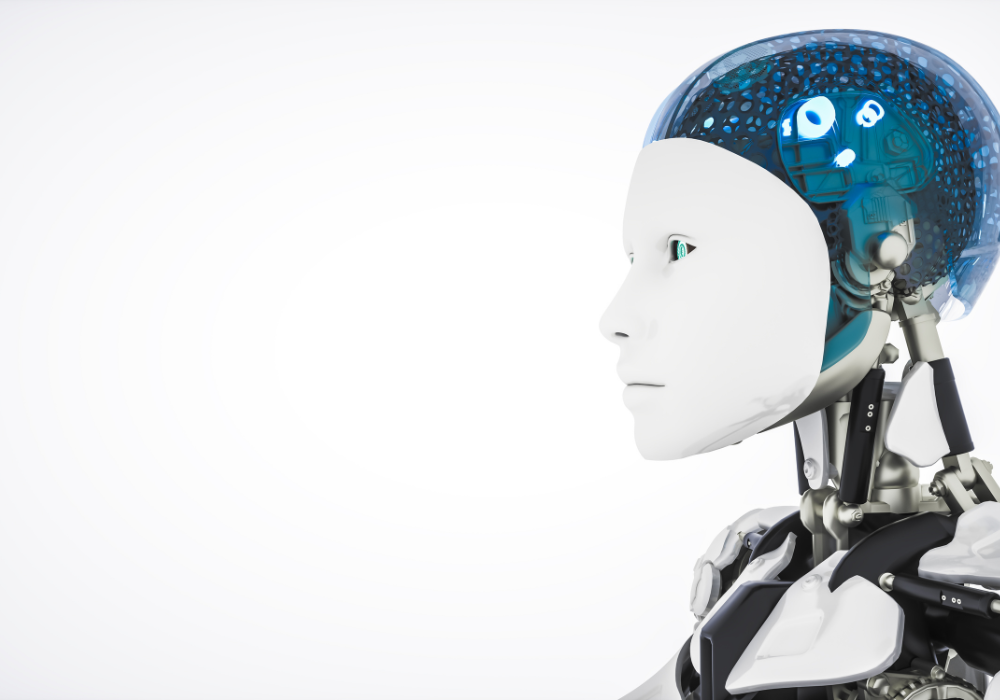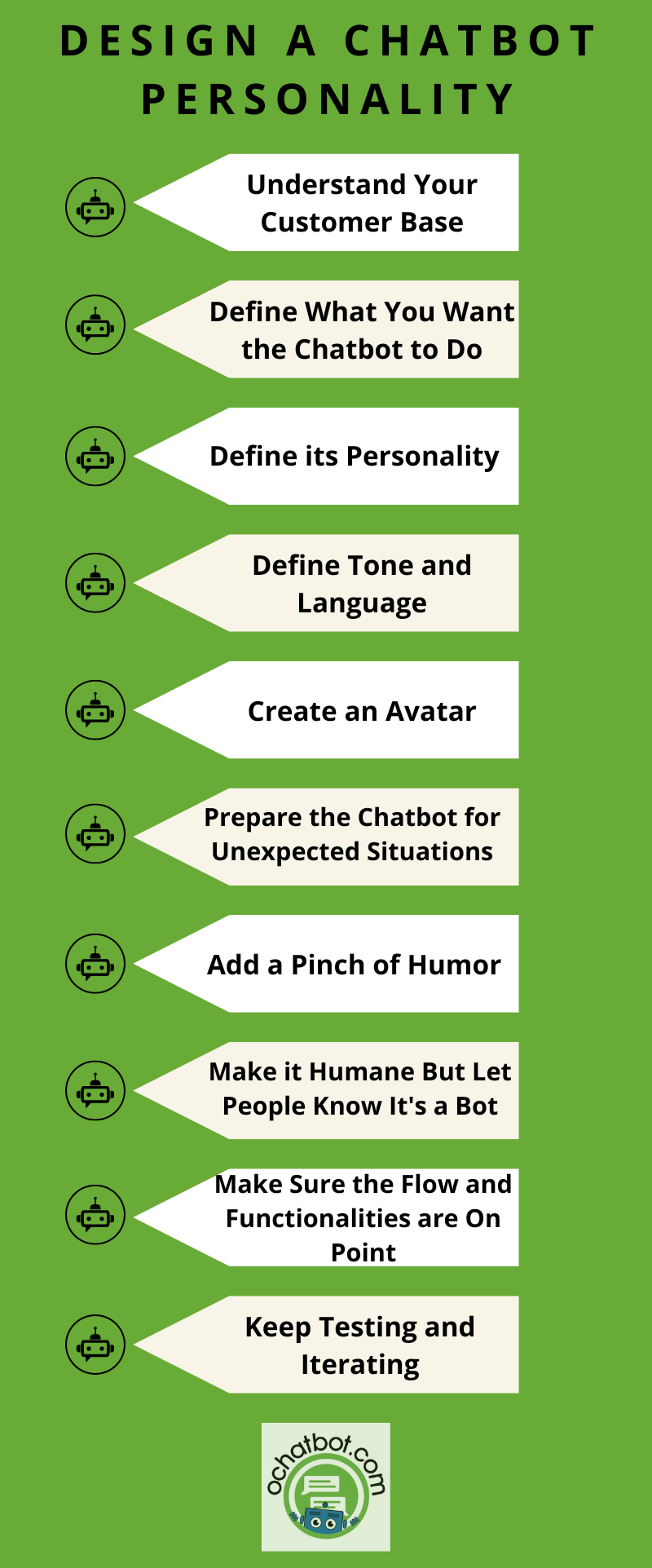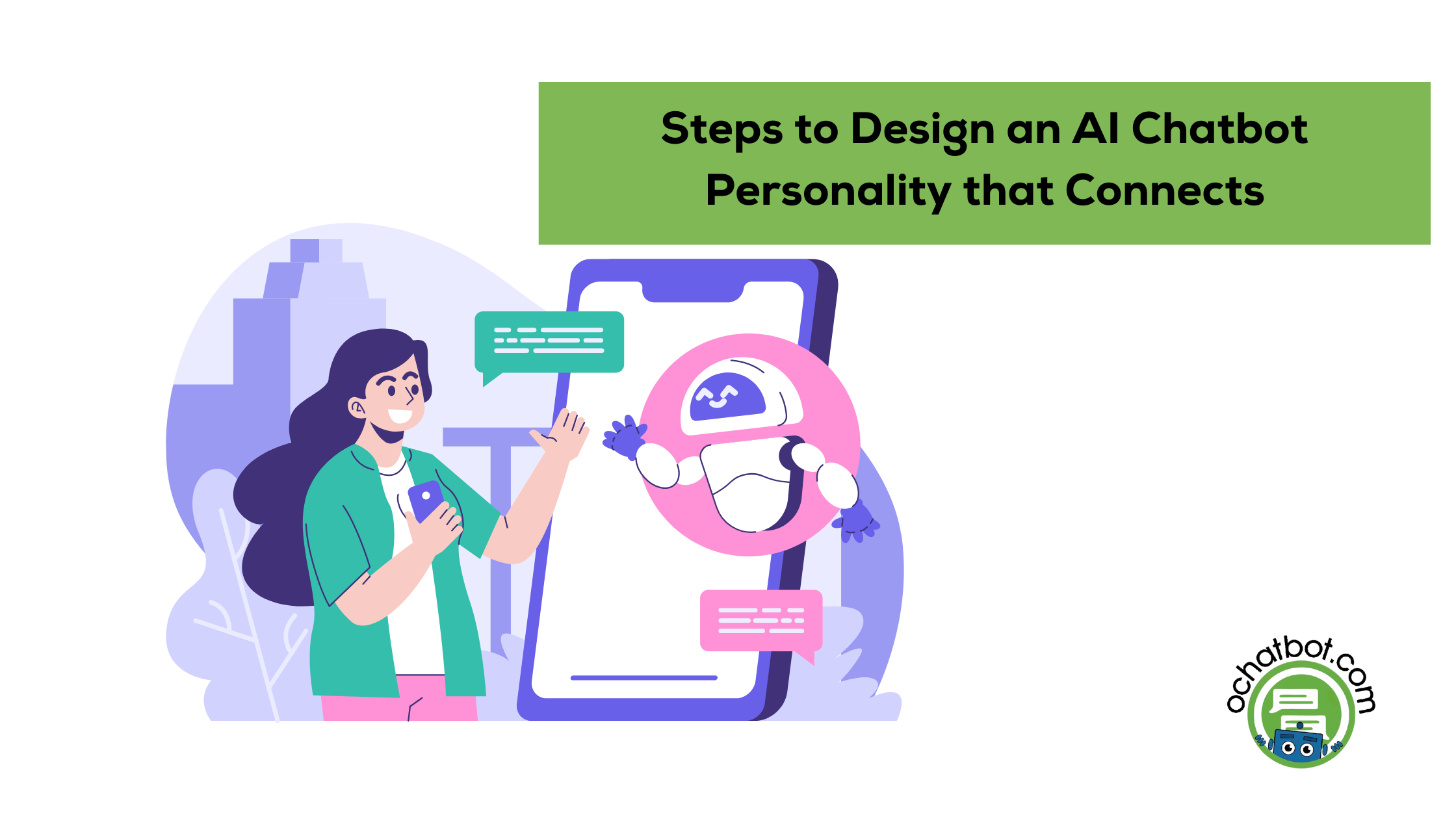Chatbots have completely transformed the way humans interact with businesses. From initiating conversations to driving conversions, chatbots have become an integral part of a company’s business strategies.
Chatbots provide instant responses to questions, aid with customer support, and even offer personalized recommendations to the user while costing far less than human support. As a result, they have become increasingly popular and are being enjoyed by both customers and businesses alike.
In addition to the functionalities of a chatbot, a chatbot personality is an additional factor that helps engage customers and greatly enhances the user experience.
In this article, let us see what a chatbot personality is, why it is important, and how to design one with personalities and traits people love.
What is Chatbot Personality?

Humans are highly emotional and social beings. Sometimes, they tend to anthropomorphize non-human entities with human characteristics and traits.
AI chatbots are computer programs that can contextually converse with humans and meet their needs and queries using machine learning techniques like NLP and NLU. Even though chatbots are computer programs, they have certain features such as tonality, a sense of humor, and language associated with the way they converse with humans.
When designing a chatbot, it is necessary to define and imbue certain personalities into it. When a chatbot is designed for customer support purposes, it is important to have a formal and polite tone to converse with the customer and answer their queries, just like a customer service representative.
Typically, a chatbot that reorients or adapts its personality to the customer’s needs, requirements, and use cases is generally cherished by the customer.
Why is it Important?
Chatbots are one of the first things a visitor interacts with when they land on your website. They are also an important element customers interact with to gain a view of your services, products, and professionality.
Chatbot personality is an impactful factor that reflects your brand identity, conveys your purpose across the audience, and delivers an exceptional customer experience with the end point of how the user would perceive the bot.
Most organizations and firms leverage the power of AI and ML techniques like NLP, predictive analysis, and neural networks to create a chatbot that can understand the customer’s needs, their intent and respond to them, taking emotions into account.
With more satisfied customers, better customer retention, and additionally with it comes loyal customers and more conversion.

True AI to engage shoppers in conversational eCommerce. Create happy customers while growing your business!
-
5% to 35% Increase in AOV*
-
20% to 40% Increase in Revenue*
-
25% to 45% Reduction in Support Tickets
WE GUARANTEE RESULTS!
*When shoppers engage with Ochatbot®
How to Design a Chatbot Personality?

Crafting and designing a chatbot personality is a crucial element that helps transform your chatbot from a simple conversational tool to an interactive assistant that customers trust.
However, designing a chatbot with an ideal personality that customers love might be quite a challenging task. Here are some factors to consider when designing a chatbot personality for your AI chatbot:
Understand Your Customer Base

Just like creating a marketing campaign or designing a chatbot strategy, researching the audience stream and understanding their interests and demographics helps to design a chatbot personality that resonates with them.
To design a chatbot personality effectively, research your target audience, acquire information using surveys and fillable forms, and uncover what people expect from your chatbot regarding its personality aspect. Another way to understand your customer base is by analyzing data such as demographics, usage patterns, and website activity. This can help narrow down your chatbot’s personality to be more relatable.
Additionally, you can also segregate the audience based on different perspectives and help to develop multiple versions of chatbots that can satisfy a large scale of users. For instance, a chatbot with an interactive, fun, and colloquial personality might be preferred by teens, while a polite and formal tone devoid of slang is more suitable for the millennial audience.
Define What You Want the Chatbot to Do
Determining the purpose of your chatbot and defining what you want it to do is an essential step before designing your chatbot’s personality.
Though a chatbot can be used for a variety of tasks, knowing its actual purpose and assessing its use cases like customer service, marketing, or personal services can help drill down and define your chatbot’s personality. Also, understanding users’ needs, expectations, and pain points can help you design your chatbot’s features.
For example, the personality of a customer service chatbot or a support chatbot greatly differs from that of a fun, entertainment chatbot. While a customer service chatbot should deliver straightforward and polite answers, a fun chatbot is expected to entertain and engage the user with witty responses and statements.
Define its Personality
A chatbot personality has different traits and characteristics like tone, language, and communication style. These are features that make it seem more human-like.
To decide on a personality, you can use verified scientific personality models like Myers-Briggs Type Indicator (MBTI), the Big Five personality traits, or the HEXACO personality model to define its personality and test your chatbot. Also, make sure that your traits are bound by the brand values and the characters you want to exhibit.
Define Tone and Language

Since most of the communication between humans and chatbots happens via text, the tonality and language of a chatbot personality play a pivotal role in how people perceive your chatbot.
Contextualizing and building a script is one of the most crucial tasks. It is better to hire a good copy/content writer who understands the context, the purpose of your chatbot, the audience mindset, and the goals of the chatbot from the point of view of the user and write a highly engaging script. Additionally, you can have multiple scripts depending on the audience, that start from greeting to ending and fine-tune them for perfection.
Your chatbot’s personality traits can also be a major driver when designing the tone and language of your chatbot. A chatbot with a friendly personality can have a more conversational tone, whereas, a more authoritative personality needs a professional and formal tone.
More importantly, it is also necessary to maintain a uniform tone-of voice throughout the scripts irrespective of the platforms, to maintain brand identity.
Create an Avatar
A chatbot’s avatar is a graphical representation of the chatbot that helps reinforce its personality. It is an optional but effective feature when designing a chatbot personality since a chatbot is something people land on when they visit your website and gives the user a sense of conversing with someone rather than a computer program.
Your chatbot can be your company mascot, a logo, or a human-like character that represents your brand. Your avatar can include your bot’s name, a visual identity, and other factors that represent your business.
When designing an avatar, choosing an appropriate name for your chatbot can help your audience remember it easily, draw their attention and reflect its personality. When creating a visual identity, animated characters are preferred over human images. For example, a chatbot designed for professional use should have a formal appearance and persona, while a chatbot aimed for entertainment purposes can have a more playful and outgoing look and feel.
Prepare the Chatbot for Unexpected Situations
As the famous saying goes, “to err is human”; chatbots can also make some unexpected errors or might not be able to respond to some questions out of the blue. In that case, it is better to have a fallback response that helps handle the situation in the best way possible without leaving the user unsatisfied and provides an alternative just like a human would.
Even though you’d have created a perfect script, had multiple variations of conversations, and made iterations to it, there could still be some instances when a chatbot might not be able to handle requests out of the blue.
Depending on the use of your chatbot, you can craftily design an effective fallback response to your chatbot. The fallback response for an entertainment chatbot can be comical and witty with a touch of humor. For professional cases, the fallback response should be apologetic and polite with ways to connect with live chat support to get their queries clarified.
It is also better to monitor, feed the data and train the chatbot with new queries posed and keep it constantly updated. This will help lessen the scenario of the chatbot blanking out, even in unexpected situations.
Add a Pinch of Humor

Humor can turn any situation around and is a great way to answer questions, maintain engagement or respond when faced with difficulties. It helps the user be more comfortable with interacting with a chatbot and delivers a pleasant user experience.
The humor should adhere to the chatbot’s personality and your brand’s values and should be appropriate for the users. Another way to add chatbot humor is by using GIFs, emojis, or memes, especially for entertainment purposes.
But, it needs to be carefully added and precautionary measures should be made not to overdo it, as harsh, cold, or inappropriate humor can have adverse effects on the brand’s reputation.
Make it Humane But Let People Know It’s a Bot
When designing a chatbot’s personality, it is important to find a balance between imbuing the bot with human characteristics while adding efficiency. This helps make the bot more effective, engaging, and authentic.
The humane aspect makes the chatbot more genuine and helps it align with the user’s interest. This will make them feel comfortable and naturally engage with the chatbot. At the same time, it is also necessary to let the user know they are conversing with a bot. This aspect prevents them from making important decisions and keeps the user’s expectations balanced, eliminating the risk of misunderstandings.
Make Sure the Flow and Functionalities are On Point
While the personality of a chatbot is important, the functionalities and the flow of a chatbot are also equally important.
The number of tasks the chatbot can handle precisely and accurately, in addition to the engagement factor, will have a positive effect on the overall user experience. The tasks can be related to customer service, support, order tracking, payment processing, or any other task that falls within the goals of your company’s customer outreach.
To ensure this, it is important to work on the technical aspects of the chatbot like the scripting, coding, and maintenance parts, in addition to the design.
Keep Testing and Iterating

The final, yet crucial component when designing a chatbot personality is testing and iteration. Even if there was a lot of effort put into designing the functionalities and design aspects, there might still be some instances of fallout.
By monitoring your chatbot’s performance, multiple use cases, users’ satisfaction, their feedback, and data acquired from them, you can analyze and understand the areas of improvement and eventually, drive the chatbot to near perfection. Testing with new customers, and testing across channels and different platforms helps maintain the uniformity of the chatbot, which helps refine the bot and provide an increasingly positive customer experience.
Read More: List of Personality Chatbots
Frequently Asked Questions
Can chatbots have a personality?
Yes, recent iterations of chatbots do exhibit a personality. It is defined by the set of characteristics a chatbot can possess that determines the tone, language, and the way it converses with the user.
Why is personality an important factor for chatbots?
Even though the functionality a chatbot exhibits is important, the personality aspect of a chatbot helps the user connect with the chatbot, and relate themselves to it. Also, a chatbot’s personality reflects the brand’s characteristics and value through its avatar, tone, and language.
What are some general functionalities important for an AI chatbot?
An AI chatbot contains a wide range of features depending on the purpose and the use case in which it is deployed. Some features include the ability to handle customer support, answer questions, help with lead generation, perform and automate tasks, and even act as a virtual assistant.
Give Life to Your Chatbot
With the help of AI chatbots, businesses have been seeing exponential growth on almost every front. This is a result of the constant enhancement of the functionality, design, and personality of the chatbot.
A chatbot with an ideal personality that customers love can greatly help enhance customer engagement leading to better satisfaction and loyalty. Thereby, designing a chatbot personality to the needs of the users and that adheres to the brand values leads to engaging interactions with better conversions.
- The Best Chatbots for Customer Service: Boost Support and Save Time - April 11, 2025
- Top 5 Must-have Shopify Review Apps - March 14, 2025
- Ochatbot Quick Tutorial #1: Help customers find products with Generative AI - December 12, 2024

